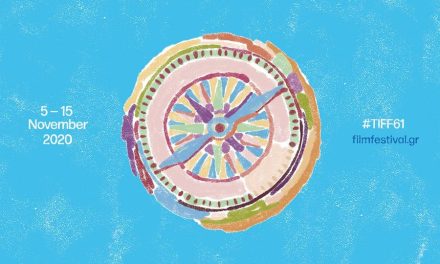What do we mean when we talk about Greek fashion? How has it been shaped over the years, conditions and regions? An exhibition titled “Greek Fashion – 100 inspirational and creative years”, running through January 31, 2020, at the Hellenic World Cultural Centre in Athens, aims at giving an answer by exploring the influence of Greek culture and civilizations on fashion. The event is co- organized by the “V. Papantoniou” Peloponnesian Folklore Foundation, a privately supported foundation based in Nafplion, which was founded in 1974 with the goal to promote the research, preservation, study and presentation of the material culture of the Peloponnese, as well as of the whole of Greece.
As Nikos Saridakis, designer and curator of the exhibition, puts it, “the show reflects on the national identity of fashion.” Greek fashion, which started out with tentative steps in the first decades of the 20th century and is now well established, has followed a rising path. In different ways during each decade, there has been a search for a European-Greek identity in the style and aesthetics of Greek fashion, in order to document the national identity and the continuity with the lost cultural past. Accordingly, almost incessantly from the very first years of the century, all the historical periods in the course of Hellenism and the urban and folk culture were constant points of reference and sources of inspiration in all forms of arts and crafts: from the Cycladic, Minoan, Archaic, Classical and Hellenistic Antiquity to Byzantium, the centuries of Ottoman rule and conquest by the West, until the formation of the contemporary Greek State after the War of Independence in 1821 and the following years until the early 20th century.
Thus, the exhibition aims to present these numerous different sources of inspiration and the unique results by each designer and personal style by showcasing around 140 items of clothing from the fashion collection of the Peloponnesian Folklore Foundation. The influence of the past is put to form in a modern outlook and creation, whether by a famous designer or by a dressmaker following the trend of the season. Influences are sometimes obvious, and other times the visitor is called to trace them either in the form and pattern geometry or in its decoration. Sometimes these clothes are shaped according to the trends that prevailed in European fashion at the time, while other times they are more oriented towards the historical era that inspires them. At times, they copy the original and at other times they merely reproduce its allure. Even the selection of materials such as the fabrics, the threads, the weaving methods, the color scale and the techniques used for dyeing, as well as embroideries and knits as significant types of folk crafts, are prominent in the show.
The exhibition is accompanied by an excellent catalogue in Greek and English, while a series of educational programs are also available for students. Furthermore, in a specially designed area, selected companies from the fashion industry are showcasing their contemporary creations inspired by and with a reference to Greek civilization, such as Yannis Tseklenis’ spirited printed fabrics which often included motifs from Greece, thus propelling the country’s heritage into the global limelight in the 1960s and 1970s.
Nowadays, while the fashion industry continues its perpetual search for the next big thing, an increasing number of local designers and brands are incorporating a series of neo-Greek chic elements into their creative identities. They are also adding a “Made in Greece” dimension, a sign of pride and persistence during tough times. Such examples include Zeus+Δione, Ioanna Kourbela, The Artians, Tria etc and Ancient Kallos among others.
Read also: GNA Feature | Greece & Jewellery: A Long-lasting Love Affair
E.S.
TAGS: ARTS | ATHENS | BUSINESS & TRADE | FESTIVALS | GLOBAL GREEKS | HERITAGE | HISTORY













